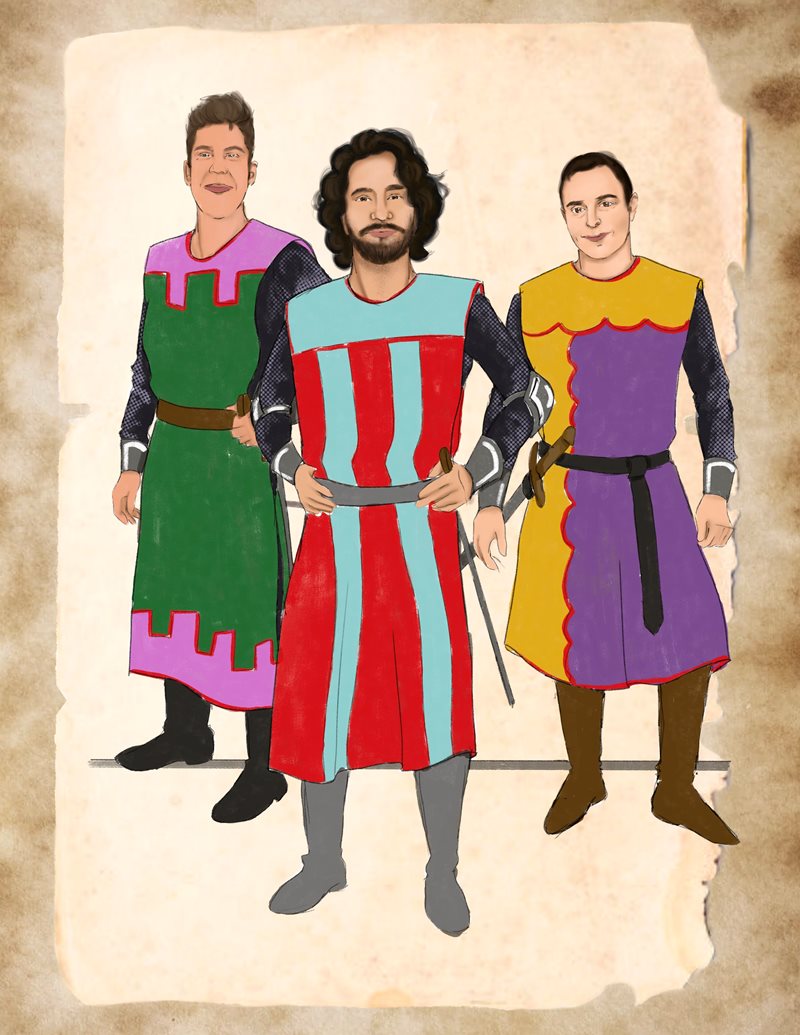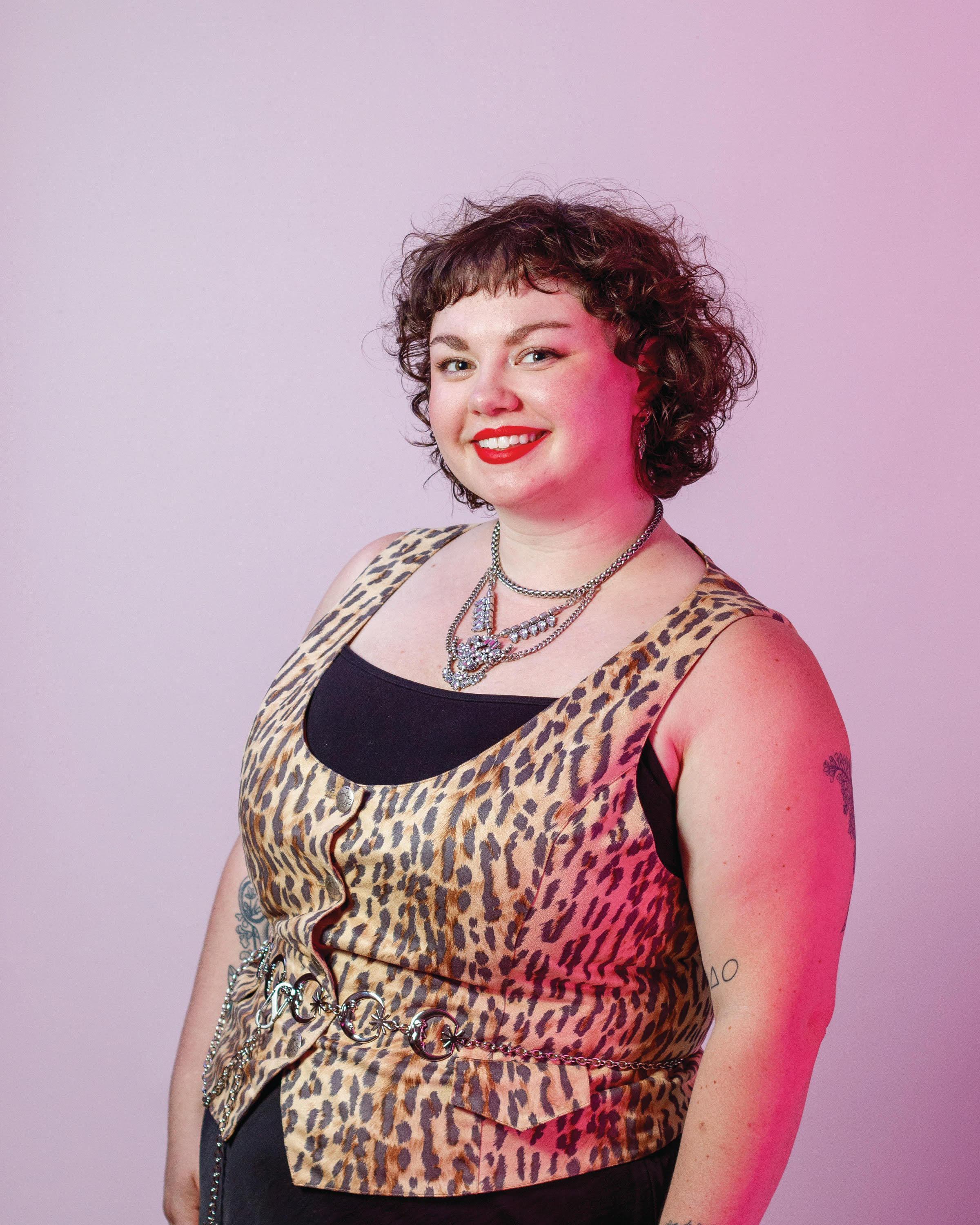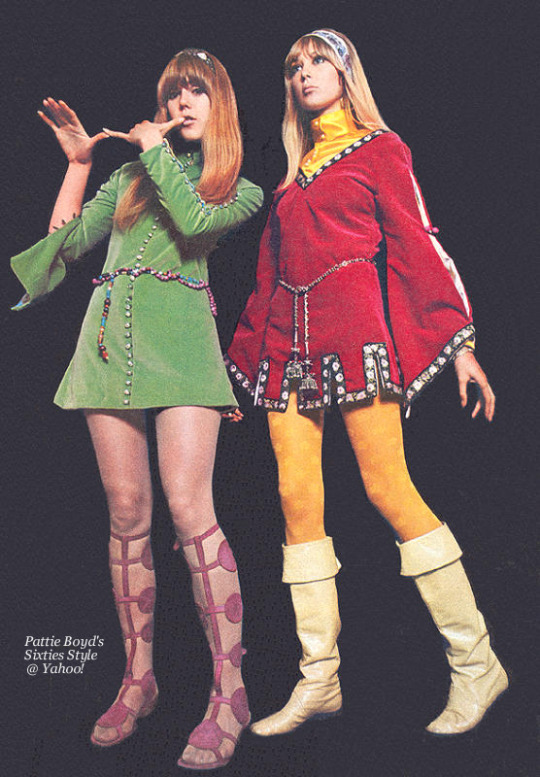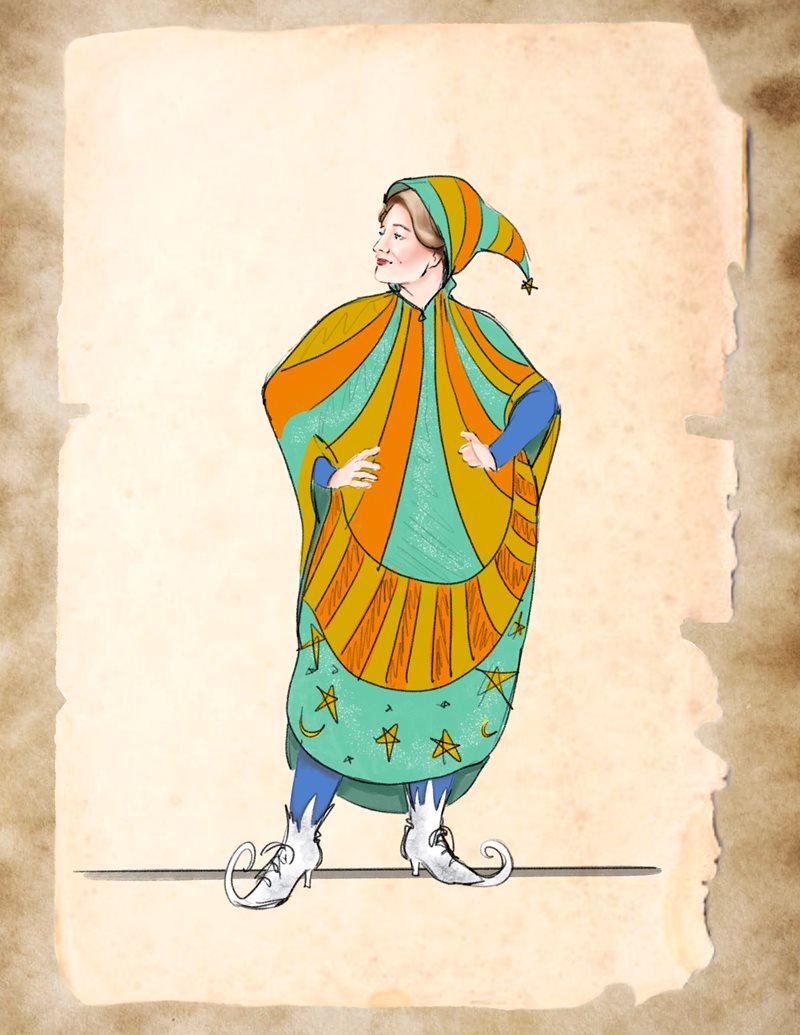Getting Medieval with Once Upon a Mattress Costume Designer Madison Booth
by Leslie Simon
In the medieval world of Once Upon a Mattress, Costume Designer Madison Booth’s bright, colorful costumes take inspiration from the past, but a more recent past than you would expect; one of 70s rock stars dressing like the medieval times.
The post-war 1950s were a time of consumerism and looking to the future. Clothes, houses, and even cars were given modern, futuristic shapes, and people were expected to buy a house, create a nuclear family, and get new cars and clothes. Youth looking for something different than their parents’ lives sought a more pastoral, anticonsumption way of life, and began wearing more old clothes than new.
When there is upheaval in the world, some begin to look inward and to the past. Stories like J.R.R. Tolkien’s Lord of the Rings and Lewis Carroll’s Alice's Adventures in Wonderland grew popular, and expanded people’s desires for medieval fantasy, enlightenment, and curious trips.
Key elements of the 60s-70s medieval revival look included long tight sleeves, puff shoulders, wide bell sleeves, loose tunics, high necklines reminiscent of religious cassocks, rich fabrics like velvet and brocade, elaborate embroidery and other handmade craftwork, decorative belts, long beaded necklaces, hoodies, head coverings and more. In the Arvada Center’s version, Madison Booth shows that craftwork side of the revival by even taking inspiration from Nudie Cohn’s bedazzled western suits. Read on as Booth talks about her inspirations for Once Upon a Mattress and come see these costumes in their beautiful glory November 22 - December 29!
AC: How did your research process begin when you started working on Once Upon a Mattress?
Madison Booth: I took to Pinterest because I love the rabbit holes I can get lost in, especially when researching for fantasy shows. Kenny Moten, the production's director, and I decided early on that we weren't going to stick to a specific medieval period, so it was fun to let my mind follow its interests and pull details from anywhere between 1100 to 1600. Along the way I remembered the medieval aesthetic revival in the 1960s and 70s, which provided a lot of the color inspiration for the show.

AC: Do you remember the first time you learned about or saw the late 60s-70s Medieval Revival style? What made you want to lean into that look for some of the costumes?
Booth: I've always loved the 70s celestial aesthetic, and how musicians like Stevie Nicks and Kate Bush really capitalized on the look, and how later on contemporary musicians like Florence + The Machine and fashion brands like Gucci under Alessandro Michele adapted the idea for now. The Medieval revival wasn't a huge jump from the celestial, and bands such as The Rolling Stones were really into it. Brian Jones was a big inspiration for the Minstrel. I also love how 70s rock bands that took part in this style looked like they raided a costume stock and took a bunch of old Shakespeare costumes. It gave me a lot of room to play with.
AC: Are there any special references in the costumes that audiences should look out for?
Booth: Besides the Minstrel's costume, Queen Aggravain was a mixture of Game of Thrones meets the cartoon queen of hearts, and the Wizard's suit is inspired by the bedazzled western suits made famous by Nudie Cohn, worn by country music stars since the 1960s.
AC: What has been the biggest challenge when creating costumes for this show?
Booth: Really, it comes down to geography. There just aren't a lot of costumes available locally in this medieval-olde-timey period. The costume shop really worked their tails off to build me all of the pieces of my dreams, and I'm so grateful to them.
AC: What has been the most fun?
Booth: I think the most fun part of this process has really been the color. This is the most colorful show I think I've ever designed - typically I stick to a narrower color palette. It was a lot of fun to select a wider palette and then work with Brian Mallgrave, the set designer to coordinate colors on various props and set pieces.



 Key elements of the 60s-70s medieval revival look included long tight sleeves, puff shoulders, wide bell sleeves, loose tunics, high necklines reminiscent of religious cassocks, rich fabrics like velvet and brocade, elaborate embroidery and other handmade craftwork, decorative belts, long beaded necklaces, hoodies, head coverings and more. In the Arvada Center’s version, Madison Booth shows that craftwork side of the revival by even taking inspiration from
Key elements of the 60s-70s medieval revival look included long tight sleeves, puff shoulders, wide bell sleeves, loose tunics, high necklines reminiscent of religious cassocks, rich fabrics like velvet and brocade, elaborate embroidery and other handmade craftwork, decorative belts, long beaded necklaces, hoodies, head coverings and more. In the Arvada Center’s version, Madison Booth shows that craftwork side of the revival by even taking inspiration from 
